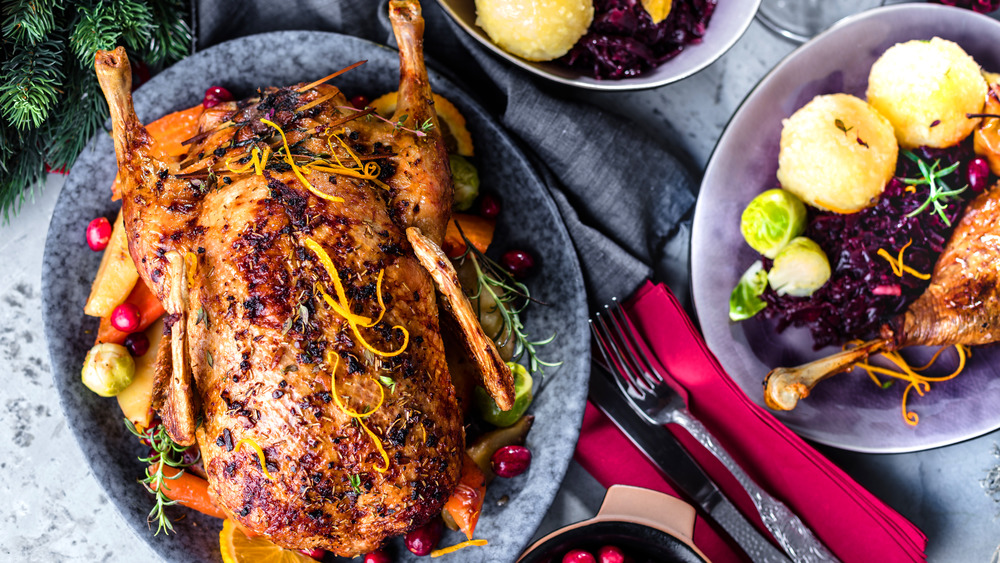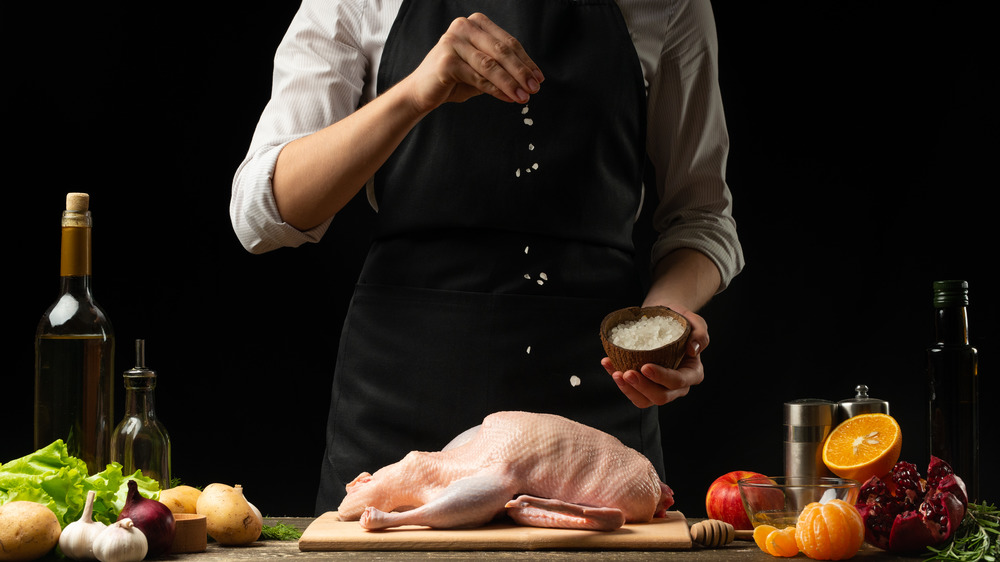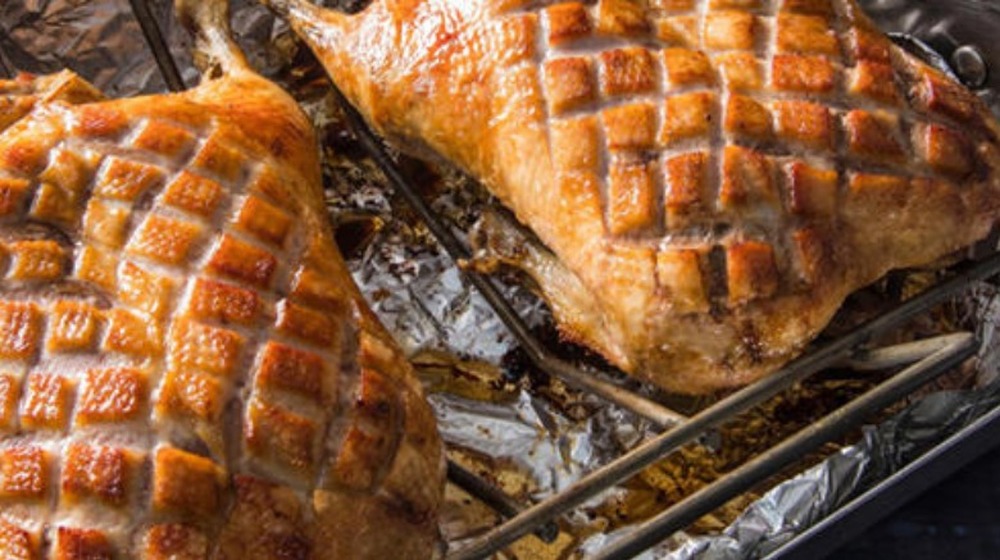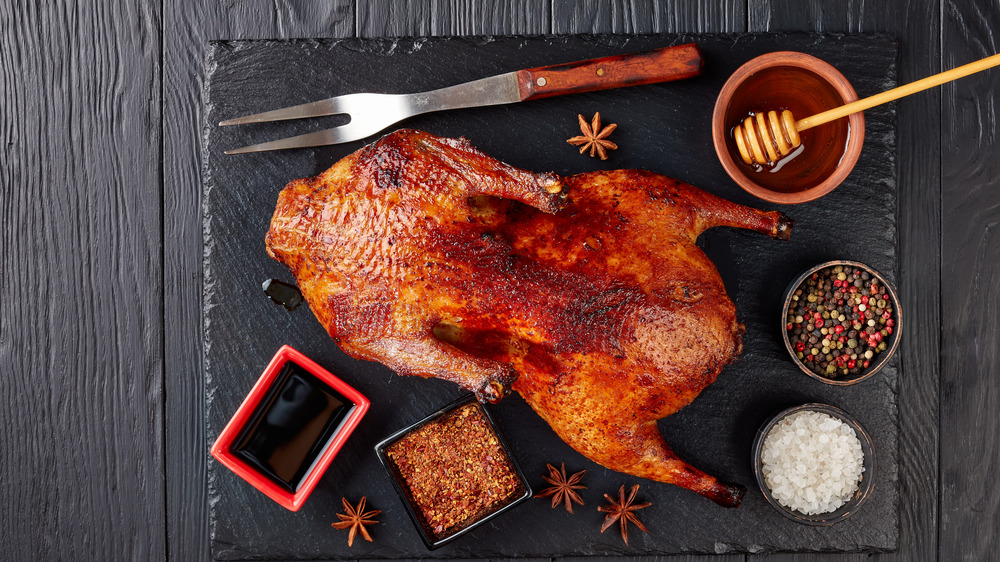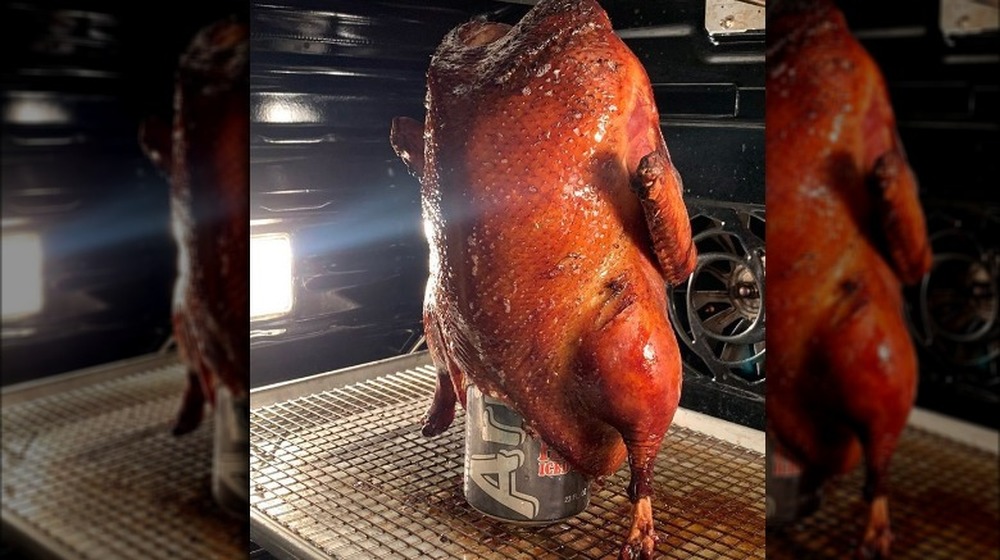Don't Make These Mistakes When Roasting Duck
Even those who enthusiastically order duck in a restaurant can be reluctant to take on this fowl in their own kitchens. Fans of duck cite the richness of the bird, which chef Thomas Robey describes as similar to the dark meat of chicken thighs, yet with a deeper flavor (via AL.com). When prepared incorrectly, however, duck can be greasy, stringy, and have a "gamy," flavor, which is why many shy away from preparing it.
You can prepare duck without the pitfalls. In fact, as the L.A. Times points out, there are many ways to serve delicious duck in your own dining room: An entree of duck breasts can be seared in minutes; legs can be braised in their own fat for duck confit; you can even barbecue it on the grill. Of course, nothing beats the dramatic presentation of a whole roasted bird with tender, juicy meat and crispy skin: "A dinner party showpiece," in the words of Cooks Illustrated. So what could ruin the big reveal?
Improper prep
Although duck has a reputation for being very fatty, duck meat itself is actually lean. The grease mostly comes from the thick layer of fat that sits between the skin and the muscle. This provides duck with its delicious, rich flavor but can result in an overly greasy bird. According to Epicurious, the first step to mitigating this problem is trimming the excess fat from the neck opening and body cavity.
Also key to managing this grease is rendering. This is why you often see a crosshatch pattern on the skin of a cooked duck. Scoring the skin with a sharp knife before cooking it allows the fat to drain from the bird as it roasts (via House of Nash Eats). Epicurious says that pricking the skin with a sharp fork works fine, too. Then, generously salt the entire bird, including the cavity, before roasting, according to Julia's Album, which also recommends stuffing the cavity with garlic cloves and sliced lemons.
Cooking it in one stage
One of the biggest mistakes you can make when roasting duck is treating it like a chicken or turkey: that is, roasting it in one stage. Compared to these other birds, the breast of a duck isn't as thick and therefore cooks more quickly than turkey or chicken. Cooks Illustrated recommends a two-step cooking process that allows the legs and breasts to cook evenly and achieve a bird that is uniformly succulent.
The method gives the legs a "head start" by submerging the bottom half of the duck in a few inches of water and simmering it to 145 to 160 degrees Fahrenheit. The bird is then transferred to a V-rack and roasted until the breast registers 160 degrees. Alternatively, the L.A. Times recommends roasting duck vertically to render the fat. This can be done with an empty beer can or a chicken roaster.
Letting the skin go soggy
Another mistake when making duck is failing to cook the skin correctly. Perfect duck skin is crispy and golden brown. According to the L.A. Times, you can accomplish this by gently lifting the skin from around the duck's breasts and thighs, which are the fattiest parts of the bird. After you've done this, ladle boiling water onto the duck. This accomplishes two things: It helps melt the fat and makes the skin tauter.
If lifting and replacing the delicate skin makes you nervous, Epicurious skips this step and simply calls for pouring two cups of boiling water over the bird. When that is done, place the duck on a rack and chill it uncovered in the refrigerator. This will help to dry out the skin before roasting, another way to help you get perfectly-crisped skin.
Forgetting to turn the duck
If you opt not to follow the Cooks Illustrated method of par-cooking the bottom half of the bird, or the L.A. TImes' proposed vertical can-cooking method, you'll want to turn your duck throughout the roasting process.
Julia's Album advises that a typical duck will take a total of three hours to roast at 350 degrees. The will be four phases to turning the bird: One hour, breast-side up. Then, turn the duck and roast it breast-side down for 40 minutes. Turn the duck breast-side up once more, and brush it with a balsamic-lemon mixture, and finally, brush it with a balsamic-honey glaze before roasting breast-side up it for the final 40 minutes. Don't forget to let the duck rest for 15 minutes before cutting it, which enables the meat to reabsorb the delicious juices, according to D'Artagnan. If you love succulent duck, you can make it in your kitchen and throw a dinner party to remember.
